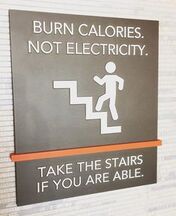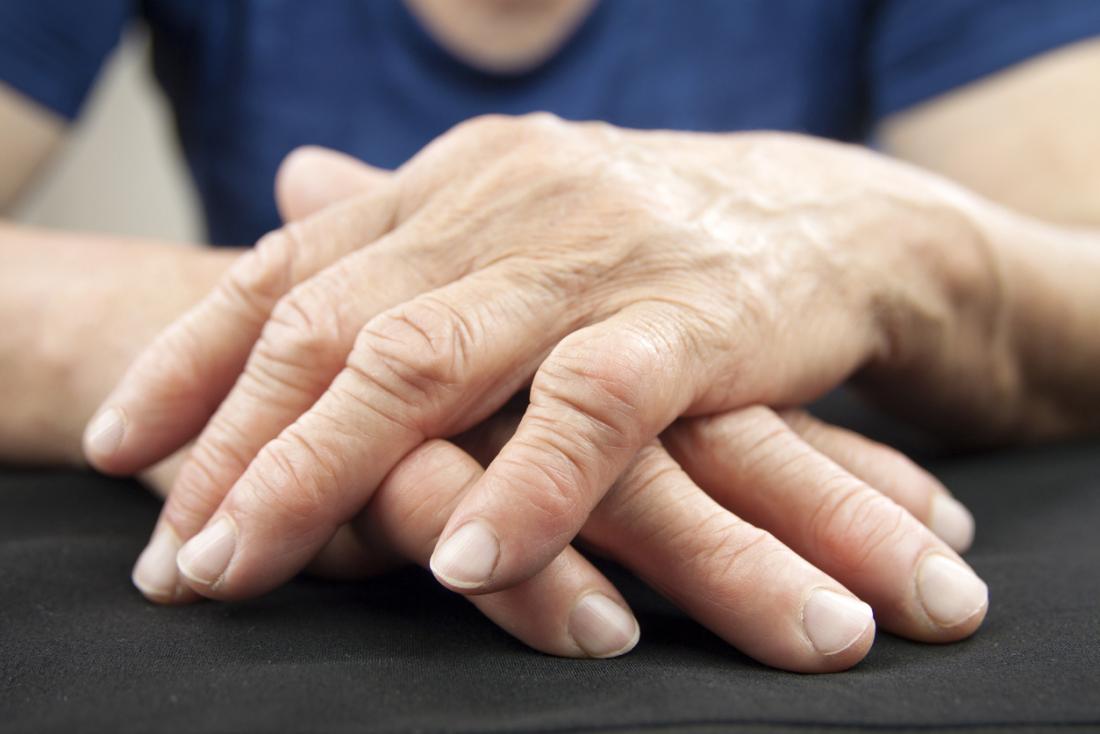 Here we are at the end of august! Back to school is just around the corner, yet again. The summer fun is winding down and classrooms, classmates and homework are all about to take over. Of course, this year looks slightly different than some of the years prior, with the ongoing unknowns of the pandemic. Regardless, back to school means back to germs and the beginning of cold and flu season. Pandemic measures in place did keep the flu at an unusually low level during the 2020-2021 flu season compared to previous years (CDC, 2021). But that is not to say that Influenza didn’t still exist! Below you will find some tried and true ways to support your child’s immune system through the upcoming return to school.
Remember to always strive for progress, not perfection, and if you need support, we are here for you. To book an appointment call 416-639-2459 and book in under Dr. Solomonian, one of our lovely team members will be happy to help you and your family! Centers for Disease Control and Prevention. (2021, July 23). Flu season. Centers for Disease Control and Prevention. https://www.cdc.gov/flu/season/index.html.
0 Comments
 Movement - but not the kind of we usually talk about. Movement is a foundational pillar of health that is almost always discussed as part of a healthy lifestyle. When we say the word “movement”, what do you think about? When asked to describe movement, the answer usually revolves around INTENTIONAL movement (i.e. a run, a bootcamp class or a yoga practice) for the purpose of living and maintaining a healthy lifestyle. But what about the activities of daily living and how they can influence our health? What benefits do these not-so “micro” movements have on our bodies? ⠀⠀⠀⠀⠀⠀⠀⠀⠀ This is where N.E.A.T comes into play (non-exercise activity thermogenesis). N.E.A.T refers to our bodies’ function of expending and burning energy in all of the little movements that we never really consider, especially pre-pandemic. It’s the energy expended for everything we do that is not sleeping, eating or sports-like exercise. This includes activities such as walking to work, typing, performing yard work, and other daily step count contributions. This is also the type of movement that has had the most dramatic loss during the pandemic. I know at least for myself, my step count decreased by over 50% during the initial phases of the pandemic. We have become more sedentary and our lifestyles took a dramatic shift. ⠀⠀⠀⠀⠀⠀⠀⠀⠀ Curiosity about the impact of step counting lead to discovering research which demonstrated how even increasing your step count by 1000 steps per day can have a significant impact on decreasing overall mortality, regardless of the intensity1. That's basically a walk around the block every morning. The purpose of this conversation is not to micromanage every step of your movement, but to have an awareness on how little changes can positively impact your wellbeing. Everything right now is basically sedentary and at our finger tips, so we need to involve our activities of daily living into the movement conversation. A few ways and ideas of how to increase movement are:
These are just a few suggestions and can modified depending on personal preferences and activity levels. These small-scale changes can lead to big scale impact in the long term. When it comes to setting movement goals, anything above baseline is a positive outcome! SMART goals are a great way to start making small but positive changes to create long-term habits. Here’s the framework to get started: S - specific M - measureable A - attainable R - realistic T - timely ⠀⠀⠀⠀⠀⠀⠀⠀⠀ Here are some reflection questions for you: ~ During the pandemic, what caused your activity to shift the most? ~ What is one sedentary hour that you can change? ~ Try making a SMART goal for yourself ⠀⠀⠀⠀⠀⠀⠀⠀⠀ We are creatures of habit, but I know time can be a barrier. So let's show up for ourselves like we show up for others. References: Hall KS, Hyde ET, Bassett DR, et al. Systematic review of the prospective association of daily step counts with risk of mortality, cardiovascular disease, and dysglycemia. Int J Behav Nutr Phys Act. 2020;17(1):78. Published 2020 Jun 20. doi:10.1186/s12966-020-00978-9  The stress response, also known as "fight or flight" is a physiological process that occurs when we are in danger, or faced with a threat. In our everyday lives, we come across situations that trigger this stress response, whether it is when we are coming up to a big deadline, running late for an appointment, or preparing to have a difficult conversation. As a short-term reaction, this response is important because it makes us alert, improves performance, and provides us with motivation to complete the task at hand. If these moments are short lived, we are able to return back to a relaxed state, and our body can recuperate from the experience. However if these situations are prolonged or we continuously perceive experiences as threats, we start to live in a chronic state of fight or flight, which can start to negatively impact our overall health. To understand the process in which chronic stress evolves, we can break it down into 3 stages:
In our busy world, there is no way to completely avoid stress; however, we have many ways that we can help our body not only deal with the repercussions of stress, but also make our body more resilient, so that we may learn to perceive situations as less of a threat going forward. Here are some evidence based ways to reduce and prevent chronic stress:
Our commitment to promoting equity, inclusion, and diversity in naturopathic medicine (Cloe Franko)6/15/2021  June is both PRIDE month and Indigenous History month in Canada. These are often seen as opportunities for celebration and reflection on Canada’s diversity. Unfortunately, events in the last two weeks -- from the discovery of the remains of 215 Indigenous children at Kamloops residential school in British Columbia to the anti-Muslim-fueled terrorist attack on a family in London, Ontario to homophobic violence in Toronto -- have also brought painful reminders of the deeply rooted racism and hatred in our communities. The oppression of and violence against Black, Indigenous, and People of Colour, LGBTQ2SIA+, women, and disabled people is not relegated to history nor to the streets -- these communities also face marginalization and oppression within the healthcare system. We, as soon-to-be naturopathic doctors, intend to be part of a wave of medical practitioners who are working to dismantle the racial, social, economic, and physical barriers to adequate, appropriate, and affirming medical care. A group of CCNM Toronto campus students have drafted a revised Naturopathic Doctor’s Oath that reflects these commitments. Our class was the first to reflect upon it as part of our orientation to clinic in May. No matter your faith, abilities, race, ethnicity, gender, sexual orientation, and socioeconomic status, we welcome you to work with us toward your unique health goals. We do not pretend to be experts in your identity or experience. Instead, we commit to working with you as an individual, considering your unique experience in the world and its impact on your health, and asking questions without judgement. I am so excited to introduce the newest members of the Tuesday afternoon team! Why book an appointment at our teaching clinic?
You can choose to book directly with any of the following senior interns (all under my supervision, and with the support of the rest of the team), or with our team in general. Without further ado, the team!  Brittany Sampson I come from a nutrition background and an east coast upbringing. I bring to the appointment an outgoing personality with an eagerness to see you succeed. I am here to help guide you on your health journey, no matter where you are starting from. Together we will create the foundation that is needed to achieve your health goals.  Zeynep Akkuyu I value an evidence-informed, individualized approach in the management of gastrointestinal disorders, skin concerns, thyroid issues and weight management. I am happy to support you in regaining control over your health, encouraging you to find balance and helping you feel your best!  Raisa Dorsainville I’m Raisa, I came to CCNM hailing from New York. My educational background is a BSc from Howard University. I’m passionate about helping others improve their quality of life so that achieving well-being comes naturally. I’m here to hold space and tend to whatever health concerns individuals are met with.  Cloe Franko I stumbled upon naturopathic medicine during my own healing journey and was so inspired I changed careers to pursue it. I believe deeply in the naturopathic principle of identifying and treating the root cause of disease and work with patients to uncover barriers to healing. I am excited to work with you to understand your personal health puzzle and support your return to your most vital self.  Annaleeza Renzone I have always had a passion to help people. People deserve extraordinary health, and it's important to me to advocate for patients and let them see their full health potential. I want to create an open and safe space for people to prioritize themselves.  Simone Pirita While completing my university degree, I found a passion for all things natural. It was shortly after that I was introduced to naturopathic medicine and I realized it was my calling. I am so excited to continue on this journey and work with my patients to help them reach their health goals, whatever they may be. I want to encourage everyone to become advocates of their own health, while supporting them in creating an enjoyable and sustainable lifestyle.  Nora Fenton I came into naturopathic medicine to educate and empower my patients so that they take their health into their own hands. I have a special interest in hormonal and reproductive health, but I’m here to address any and all of your health goals. I’m a strong believer that feeling “fine” isn’t good enough; you deserve to feel amazing. My mission will always be to meet you where you’re at so that we can achieve your health goals, together.  Han Gil Chung My special interest are musculoskeletal concerns, hormonal issues, and auto-immune conditions. I am interested in helping with your digestion and sleep to get you to your optimal health. I'm most familiar with acupuncture, herbal medicine, homeopathy, and physical medicine. Optimal health can be reached with lifestyle modifications, so I will support with clinical nutrition and exercise prescription. I believe each individual has their own direction to reach to their best health! When you are feeling that your body reactions are more intense than baseline here is a simple step by step approach that you can use to tune into your body. It is meant to be a non-judgmental practice where you can really focus on how your body and mind are coping. Follow these 5 BASIC steps in order to check in with your body and mind:
B: Behaviours
A: Affect (emotions)
S: Sensation
I: Imagery
C: Cognition
Remember, be patient with yourself and non-judgmental. The goal is to notice, not to change. Being mindful of these reactions of your body and mind will help to understand how you cope in these situations. This is a simple way to begin practicing mindfulness. An essential primer to autoimmune conditions - starting with rheumatoid arthritis ... check it out!
Painful periods – otherwise known as “dysmenorrhea” in the medical world – are extremely common, so when should you worry about an underlying condition?
Over 60% of women in Canada suffer from dysmenorrhea, while 10-15% of reproductive age women are affected by a condition called endometriosis which often presents with painful menses. What is endometriosis? Endometriosis is a condition where endometrial tissue, which is normally limited to the inside of the uterus, grows elsewhere. This can result in uterine tissue on the fallopian tubes and ovaries, and can even extend to other areas within the abdomen. Uterine tissue is sensitive to hormonal changes throughout the cycle so that it can grow and be shed each month. When this tissue grows and sheds outside the uterus, this can lead to immensely painful periods. As endometriosis progresses, pain can also occur throughout the whole month. Additional symptoms can include pain with intercourse, painful defecation, painful urination, and intermenstrual bleeding (bleeding between periods), as well as infertility. Women with endometriosis can vary in presentation, with some having all of the above symptoms, and others having none. Women who are asymptomatic often only discover their endometriosis when they begin to struggle with infertility. Fertility is often disrupted with endometriosis because the tissue deposits on fallopian tubes and ovaries can interfere with their optimal function. Hormone irregularity can also contribute to infertility. What causes endometriosis? The cause of endometriosis is still unknown but there are a couple current hypotheses. One possible explanation is called retrograde menstruation, where the endometrial lining flows back through the fallopian tubes and into the pelvic space, instead of out through the vagina. Another hypothesis is that the endometrial tissue deposits are from tissue remnants that did not properly differentiate during fetal development. How is endometriosis diagnosed? The process of diagnosis will include ruling out other conditions that can cause pelvic pain, and likely a transvaginal ultrasound. Diagnosis of endometriosis can be challenging because currently the only way to confirm its presence is by surgical laparoscopy and visualization of the abdominal cavity. There is a protein called CA-125 that can be measure in blood, which can be indicative of endometriosis. Levels tend to be significantly higher in those with endometriosis, but not consistently enough to be used for diagnosis. Who is at risk for endometriosis? However, there are certain risk factors that can increase the likelihood of having endometriosis. A younger age at first menstruation, short menstrual cycle lengths, and lack of pregnancy have all been correlated to an increased risk for the disease. This suggests a role of estrogen dominance in the development of endometriosis, as estrogen levels are higher than normal in these women. Inflammation has also been seen as a contributing factor in endometriosis. Physical activity and omega-3 fatty acids can help decrease inflammation, and furthermore decrease risk. How is endometriosis treated? Conventional treatment for endometriosis usually consists of non-steroidal anti-inflammatory drugs (NSAIDs) to control pain and oral contraceptive pills (OCPs). There is a decreased risk of endometriosis with current use of OCPs, but an increased risk with past use. This suggests a suppression of symptoms that reappear with discontinuation of OCPs. Naturopathic treatments focus on reducing oxidative stress, inflammation, and balancing hormones. Dietary changes, acupuncture, botanicals and nutritional supplements can all be used to effectively manage endometriosis. If you are struggling with painful periods or any of the symptoms listed above, consult your naturopathic or family doctor to see if endometriosis could be the cause. References
 Your bones and their role are often overlooked. We take their function for granted, and often do not think about how we have to work to keep them healthy so they can continue to fulfill their role. These roles include:
Calcium is found in such foods as dairy (milk, cheese, etc.), green leafy vegetables (broccoli, cabbage, kale), tofu, nuts (almonds), fish in which you eat the bones, etc. [3]. Calcium is the most well-known mineral involved in building of bone structure. Over supplementation of this mineral can be harmful and cause such things as kidney stones, and myocardial infarctions (heart attacks) [3]. Vitamin D can be produced by the body from sunlight! So get outside when possible at anytime of the year in that sunlight! Dietary sources of this nutrient include fatty fish such as tuna, salmon, and mackerel, and fortified foods such as cereal, dairy, orange juice, etc., beef liver. It plays an important role in helping the body absorb calcium, and also with bone resorption and bone mineralization. Vitamin K is found in such food sources as fish, liver, meat, eggs, green leafy vegetables (kale, spinach, romaine lettuce, lettuce), vegetables (brussel sprouts, cabbage, broccoli, cauliflower), prunes [3]. This vitamin is an important cofactor involved in the process of producing hormones responsible for bone generation and normal bone turnover to keep it healthy and strong. Vitamin C is found in many foods. Some sources include citrus fruits (lemon, orange, lime), tomato, green and red peppers, kiwi, strawberries, mango, pineapple, watermelon, vegetables (broccoli, brussel sprouts, cauliflower), green leafy vegetables (spinach, cabbage) [3]. Vitamin C plays a major role in collagen formation, stimulating cells in bone formation, and healing (including bone healing), calcium absorption, and affects vitamin D in bone metabolism. Magnesium is found in fruits (avocado, banana, raspberries, figs), green leafy vegetables (spinach, kale), nuts and seeds (almonds, cashews, peanuts), seafood (mackerel, tuna, salmon), vegetables (broccoli, cabbage, green beans, asparagus, brussel sprouts), raisins, kidney beans, lentils, dark chocolate [3]. Magnesium is important for the absorption and metabolism of calcium, and in many enzyme reactions that promote bone health from such things as thyroid function, converting vitamin D to active vitamin D, calcium deposition in bones, etc. Boron is an essential element in plants, and its through this source that the general population acquires this mineral. Boron is found in such foods as prunes, plums, grapes, pears, kiwis, beans, tomato, carrots, nuts, seeds, lentils, leafy vegetables, raisins, dried apricots, and avocados, etc. [3, 4]. Boron stabilizes cell membranes and modulates membrane transport mechanisms [2]. It has anti-inflammatory, anti-neoplastic, and hypolipidemic effects [1,2]. It regulates sex hormones, and protects against oxidative stress, and improves brain electrical activity, cognitive performance, and short-term memory in elders [2]. Boron also stimulates bone growth and bone metabolism, it activates 1,25(OH)2D3 production (which increases bone mineralization) [1] and improves magnesium absorption [2]. Trabecular bone microarchitecture and cortical bone strength depend on sufficient boron intake. Zinc, manganese, and copper are typically not deficient in the Standard American Diet (SAD), so supplementation is not typically necessary for bone health, and in fact may be harmful in the case of long-term over-supplementation [3]. But it may be of benefit based on the needs of the body, for example in times of infection, zinc supplementation can help. Zinc is found in such foods as meats, shellfish, legumes (such as lentils chickpeas, etc), seeds, nuts, eggs, dairy, whole grains. Vegetarians and older individuals are more likely to be deficient and may benefit from dietary changes or supplementation [3]. Zinc is necessary to create the matrix on which calcium and phosphorous is deposited to build bone structure. It is also used to produce enzymes which degrade and recycle old bone proteins. Manganese is found in oatmeal and bran cereals, whole wheat bread and brown rice, nuts (such as almonds and pecans), pineapples, beans and legumes (such as lima beans), green leafy vegetables (such as spinach), mollusks (clams, oysters, mussels), dark chocolate, cinnamon, and tea [3]. Manganese is a co-factor in bone cartilage and bone collagen formation, and also in bone mineralization. Dietary copper is found in meats (especially organ meats), seafood (oysters and lobsters), dark leafy greens, shiitake mushrooms, nuts, grains, and cocoa products [3]. Copper is involved in an enzyme which aids in the formation of collagen and for bone and connective tissue, contribute to bone strength, and works with zinc to reduce resorption of bone. Dietary silica is found in many sources such as whole grain bread and pasta, oats, cucumbers, flaxseed, banana, spinach, mango, and even in beer! (don’t overdo it!) [3]. Silicon helps start the bone mineralization process, and so is important in maintaining strong and flexible bone. Osteoporosis Osteoporosis is a disease process characterized by low bone mass due to loss or low production, and it affects millions worldwide [5, 6, 7]. The lifetime risk for women is thought to be 40-50%, and for men it is 13-22% [6]. In the US there are 2 million osteoporotic fractures annually [6]. Non-Pharmacologic options:
With an aging population, incidences of bone disease will increase. This represents a significant burden on quality of life, society and its health and healthcare. Quite often, the focus will be on more commonly associated minerals mentioned earlier such as calcium and phosphorus. However, it is important to keep in mind that there are many things required for maintaining bone health, and there are a number of other key minerals involved which do not get as much attention but are just as vital to overall bone health. It is essential that every individual has an adequate intake of these minerals to maintain their bone strength, which allows them to significantly improve their quality of life. Talk to your naturopathic doctor or other healthcare providers about how you can help improve and maintain your bone health for years to come. Common Nutrients for Bone Health: Recommended Dietary Allowance (Median Intake)[3] Nutrient:
References:
|
AuthorThe official blog of our fabulous Tuesday night clinic group at the Robert Schad Naturopathic Clinic. Come pay us a visit! Archives
August 2021
Categories |




 RSS Feed
RSS Feed
